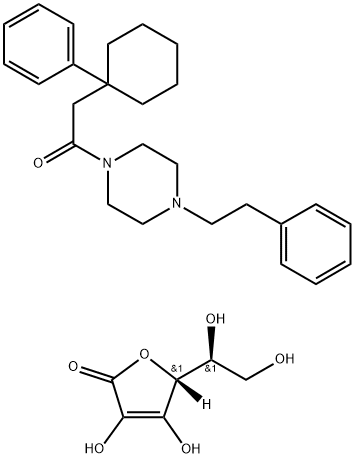3,3'-Thiodipropionic acid
Synonym(s):3,3′-Thiodipropionic acid;Bis(2-carboxyethyl) sulfide;Thiodihydracrylic acid, Bis(2-carboxyethyl)sulfide
- CAS NO.:111-17-1
- Empirical Formula: C6H10O4S
- Molecular Weight: 178.21
- MDL number: MFCD00002781
- EINECS: 203-841-3
- SAFETY DATA SHEET (SDS)
- Update Date: 2024-12-18 14:08:52

What is 3,3'-Thiodipropionic acid?
Chemical properties
3,3'-Thiodipropionic acid is WHITE FINE CRYSTALLINE POWDER
The Uses of 3,3'-Thiodipropionic acid
3,3'-Thiodipropionic acid is used as an antioxidant for fats and other foodstuffs.
The Uses of 3,3'-Thiodipropionic acid
Antioxidant in food packaging, soaps, plasticizers, lubricants, fats, and oils.
The Uses of 3,3'-Thiodipropionic acid
3,3'-Thiodipropionic acid is an antioxidant used to prevent fats and oils from going rancid. It has the same functionality as bha, bht, and propyl gallate.
Definition
3,3'-Thiodipropionic acid is a dicarboxylic acid.
What are the applications of Application
3,3′-Thiodipropionic acid is a carboxylic acid also known as Bis(2-carboxyethyl) sulfide
Hazard
Use in foods restricted to 0.02% of fat and oil content, including essential oils.
Flammability and Explosibility
Not classified
Safety Profile
A poison by intraperitoneal andintravenous routes. Moderately toxic by ingestion. A skinand eye irritant. When heated to decomposition it emitstoxic fumes of SOx.
Purification Methods
Crystallise the sulfide from water. [Beilstein 3 IV 735.]
Properties of 3,3'-Thiodipropionic acid
| Melting point: | 131-134 °C(lit.) |
| Boiling point: | 280.43°C (rough estimate) |
| Density | 1.238 (estimate) |
| vapor pressure | 0.004Pa at 25℃ |
| refractive index | 1.5500 (estimate) |
| Flash point: | 128 °C |
| storage temp. | Store below +30°C. |
| solubility | 40g/l |
| form | Fine Crystalline Powder |
| pka | pK1:4.085;pK2:5.075 (18°C) |
| color | White |
| Water Solubility | 40 g/L (25 ºC) |
| Merck | 14,9332 |
| BRN | 1210299 |
| CAS DataBase Reference | 111-17-1(CAS DataBase Reference) |
| NIST Chemistry Reference | 3,3'-Thiodipropionic acid(111-17-1) |
| EPA Substance Registry System | Propanoic acid, 3,3'-thiobis- (111-17-1) |
Safety information for 3,3'-Thiodipropionic acid
| Signal word | Warning |
| Pictogram(s) |
 Exclamation Mark Irritant GHS07 |
| GHS Hazard Statements |
H319:Serious eye damage/eye irritation |
| Precautionary Statement Codes |
P264:Wash hands thoroughly after handling. P264:Wash skin thouroughly after handling. P280:Wear protective gloves/protective clothing/eye protection/face protection. P305+P351+P338:IF IN EYES: Rinse cautiously with water for several minutes. Remove contact lenses, if present and easy to do. Continuerinsing. P337+P313:IF eye irritation persists: Get medical advice/attention. |
Computed Descriptors for 3,3'-Thiodipropionic acid
| InChIKey | ODJQKYXPKWQWNK-UHFFFAOYSA-N |
3,3'-Thiodipropionic acid manufacturer
New Products
(S)-3-Aminobutanenitrile hydrochloride 4-Methylphenylacetic acid N-Boc-D-alaninol N-BOC-D/L-ALANINOL Tert-butyl bis(2-chloroethyl)carbamate 3-Morpholino-1-(4-nitrophenyl)-5,6-dihydropyridin- 2(1H)-one Furan-2,5-Dicarboxylic Acid Tropic acid 1-Bromo-3,5-Di-Tert-Butylbenzene S-2-CHLORO PROPIONIC ACID ETHYL ISOCYANOACETATE 2-Bromo-1,3-Bis(Dimethylamino)Trimethinium Hexafluorophosphate 4-IODO BENZOIC ACID 3-NITRO-2-METHYL ANILINE 1-(2,4-DICHLOROPHENYL) ETHANAMINE (2-Hydroxyphenyl)acetonitrile 4-Bromopyrazole 2-(Cyanocyclohexyl)acetic acid 4-methoxy-3,5-dinitropyridine 1-(4-(aminomethyl)benzyl)urea hydrochloride 2-aminopropyl benzoate hydrochloride diethyl 2-(2-((tertbutoxycarbonyl)amino) ethyl)malonate tert-butyl 4- (ureidomethyl)benzylcarbamate Ethyl-2-chloro((4-methoxyphenyl)hydrazono)acetateRelated products of tetrahydrofuran








You may like
-
 111-17-1 3,3'-Thiodipropionic Acid 98%View Details
111-17-1 3,3'-Thiodipropionic Acid 98%View Details
111-17-1 -
 3,3'-Thiodipropionic Acid CAS 111-17-1View Details
3,3'-Thiodipropionic Acid CAS 111-17-1View Details
111-17-1 -
 3,3′-Thiodipropionic acid CAS 111-17-1View Details
3,3′-Thiodipropionic acid CAS 111-17-1View Details
111-17-1 -
 1975-50-4 98%View Details
1975-50-4 98%View Details
1975-50-4 -
 2-HYDROXY BENZYL ALCOHOL 98%View Details
2-HYDROXY BENZYL ALCOHOL 98%View Details
90-01-7 -
 2-Chloro-1,3-Bis(Dimethylamino)Trimethinium Hexafluorophosphate 221615-75-4 98%View Details
2-Chloro-1,3-Bis(Dimethylamino)Trimethinium Hexafluorophosphate 221615-75-4 98%View Details
221615-75-4 -
 14714-50-2 (2-Hydroxyphenyl)acetonitrile 98+View Details
14714-50-2 (2-Hydroxyphenyl)acetonitrile 98+View Details
14714-50-2 -
 118753-70-1 98+View Details
118753-70-1 98+View Details
118753-70-1